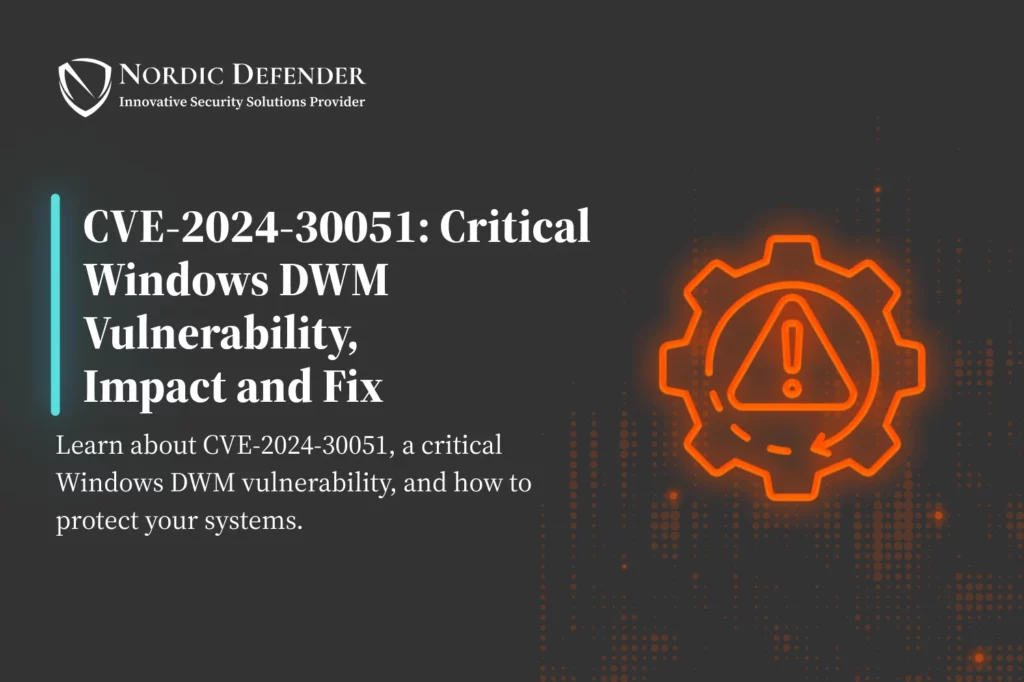Overview
CVE-2024-30051 is a high-severity zero-day vulnerability discovered in the Windows Desktop Window Manager (DWM) Core Library. This vulnerability is caused by a heap-based buffer overflow, which allows attackers to escalate their privileges to SYSTEM level on affected Windows systems.
Impact
The vulnerability affects multiple versions of Windows, including Windows 10, Windows 11, and Windows Server versions from 2016 onwards. Exploiting this vulnerability can compromise the confidentiality, integrity, and availability of the system. Attackers can execute arbitrary code with SYSTEM privileges, potentially leading to full system control.
- Publicly disclosed: Yes
- Exploited: Yes
- Exploitability assessment: High
- Exploitation detected: Yes
Exploit Mechanism
The exploit for CVE-2024-30051 involves a heap-based buffer overflow in the CCommandBuffer::Initialize method within the dwmcore.dll library. Here’s a step-by-step breakdown of the exploit mechanism:
- Heap Spray Preparation:
- The attacker performs a heap spray in the DWM process to prepare the memory. This involves filling the heap with controlled data to create a predictable memory layout.
- Triggering the Overflow:
- The vulnerability is triggered by a size miscalculation error in an integer division within the
CCommandBuffer::Initializemethod. This causes a buffer overflow on the heap.
- The vulnerability is triggered by a size miscalculation error in an integer division within the
- Executing Arbitrary Code:
- Once the heap overflow is triggered, the attacker can overwrite adjacent memory locations. This allows the attacker to execute arbitrary code by loading a crafted DLL or executable into the DWM process.
- Privilege Escalation:
- The arbitrary code runs with the privileges of the DWM user, which has SYSTEM level integrity. This effectively escalates the attacker’s privileges to SYSTEM.
Detailed Remediation Process
- Apply Security Updates:
- Microsoft has released patches to address this vulnerability. Ensure that all affected systems are updated with the latest security patches. The specific patch for this vulnerability is included in the May 2024 security updates.
- Verify Patch Installation:
- Confirm that the patch has been successfully installed by checking the version of the
dwmcore.dllfile. The patched version should be 10.0.22621.3593 or later.
- Confirm that the patch has been successfully installed by checking the version of the
- Monitor for Exploitation:
- Keep an eye on security logs and use intrusion detection systems to monitor for any signs of exploitation. Given that this vulnerability has been actively exploited in the wild, continuous monitoring is crucial.
- Implement Additional Security Measures:
- Consider implementing additional security measures such as application whitelisting, network segmentation, and least privilege access controls to mitigate the risk of exploitation.
- Educate Users:
- Inform users about the importance of applying updates and following security best practices to prevent exploitation of vulnerabilities.
Conclusion
CVE-2024-30051 represents a significant security threat due to its potential for privilege escalation and system compromise. By understanding the exploit mechanism and following the detailed remediation steps, organizations can effectively mitigate the risks associated with this vulnerability. Continuous monitoring and adherence to security best practices are essential to protect systems from such high-severity threats.
